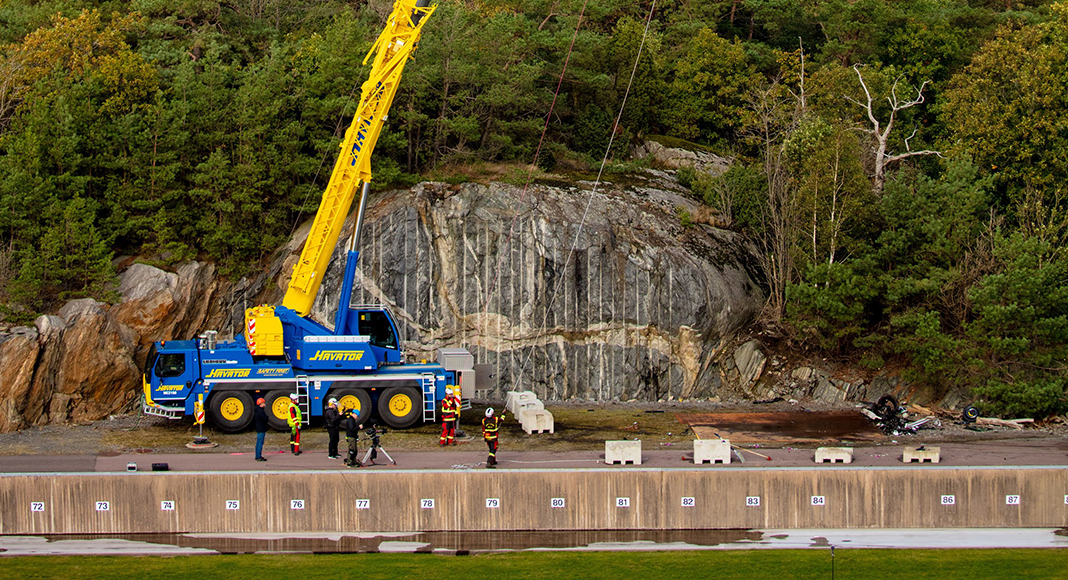Volvo has dropped new cars from a height of 30 metres as part of an extreme crash test to allow rescue services to prepare for any possible scenario.
Volvo carried out the exercise to simulate the forces that erupt in the worst crashes, beyond what can be simulated with ordinary crash testing.
Usually, rescue workers get their training vehicles from scrapyards. But these cars are often up to two decades old and there is a vast difference between modern cars and those built fifteen to twenty years ago.
The approach – carried out at the request of the rescue services – helped create enough damage to adequately simulate the damage found in single-car collisions at very high speed, collisions whereby a car hits a truck at high speed, or collisions whereby a car takes a severe hit from the side.
In those situations, people inside the car are likely to be in a critical condition. The priority for rescue services is to get people out of the car and to a hospital as quickly as possible, using hydraulic rescue tools known in the industry as âjaws of lifeâ.
âWe hope no one ever needs to experience the most severe accidents, but not all accidents can be avoided,â said HĂ„kan Gustafson, a senior investigator with the Volvo Cars Traffic Accident Research Team.
âNormally we only crash cars in the laboratory, but this was the first time we dropped them from a crane,â he added. âWe knew we would see extreme deformations after the test, and we did this to give the rescue team a real challenge to work with.â



















